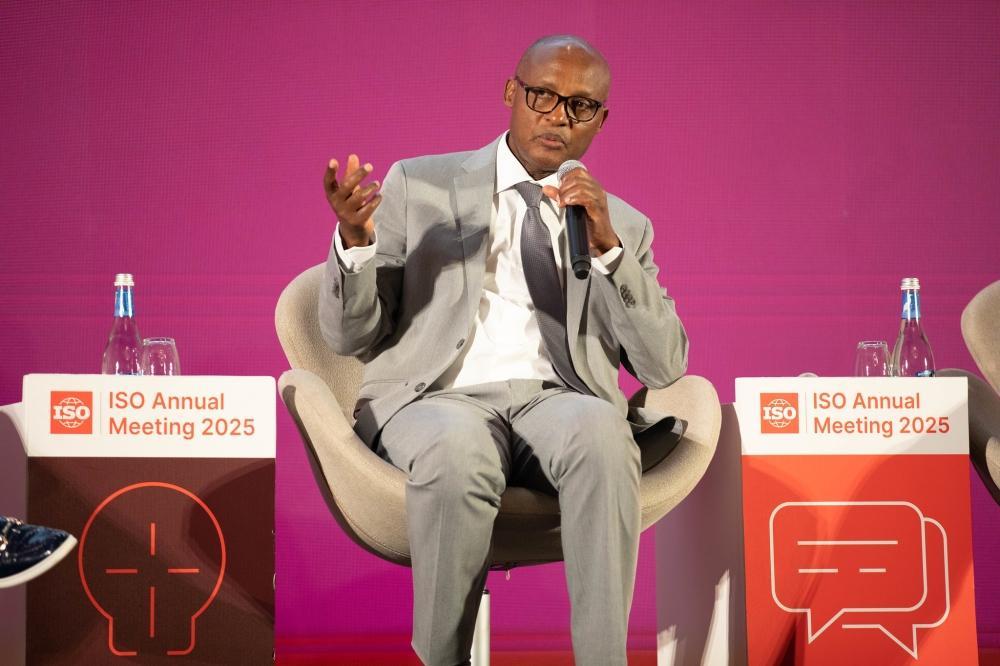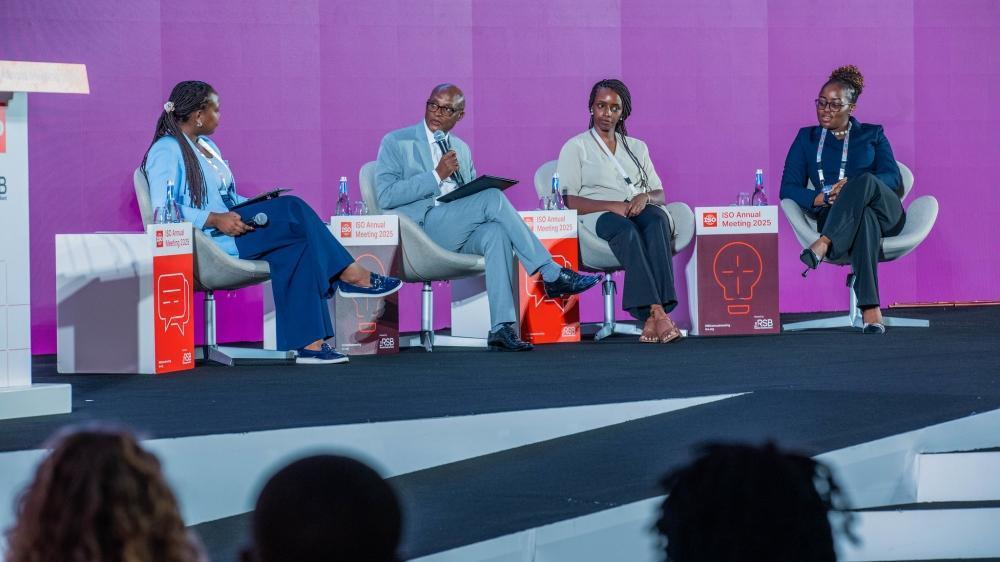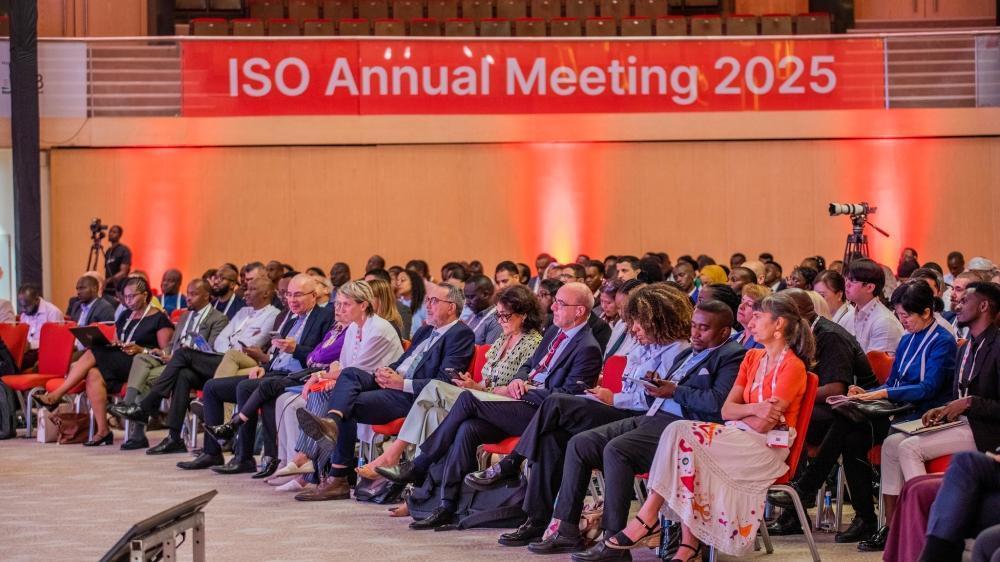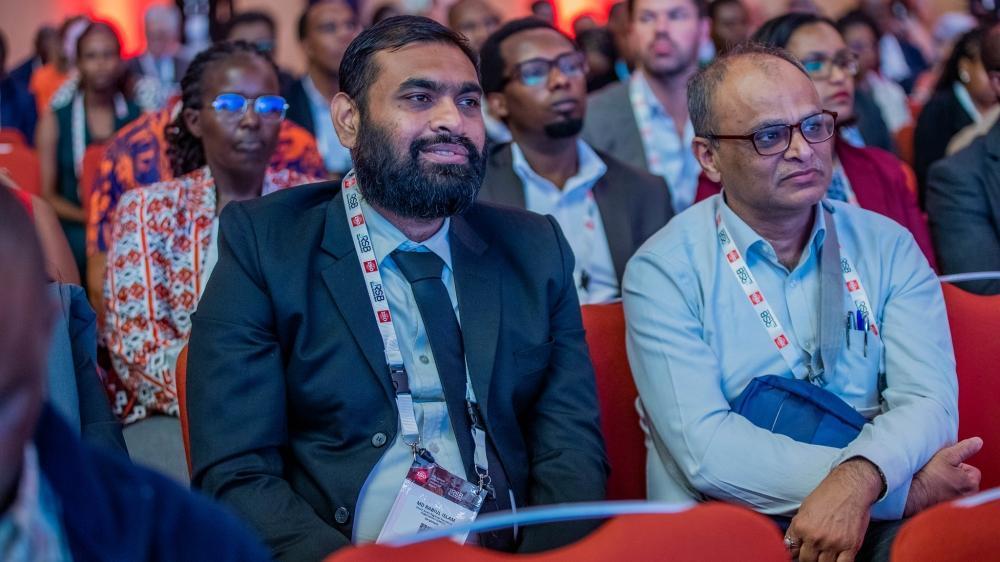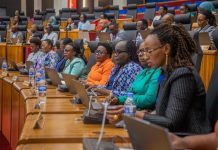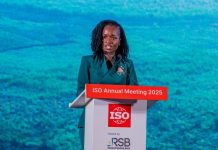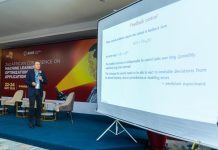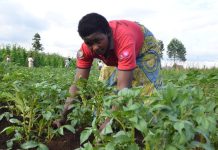Africa-Press – Rwanda. The government is embracing advanced technologies like machine learning and satellite imagery to transform the agriculture sector, with a strong focus on engaging youth and improving efficiency, sustainability, and profitability, according to the Minister of Agriculture and Animal Resources, Mark Cyubahiro Bagabe.
Speaking on Tuesday, October 7, at a session titled Cultivating Change: Youth, Tech and the Future of Agriculture, during the 2025 International Organization for Standardization (ISO) Annual Meeting in Kigali, Bagabe shared Rwanda’s journey in adopting precision agriculture and empowering young people in agribusiness.
From manual fieldwork to satellite monitoring
Speaking to journalists after the session, Bagabe said that Rwanda is set to monitor farming by use of satellite imagery and machine learning.
Bagabe shared Rwanda’s journey in adopting precision agriculture and empowering young people in agribusiness.
Previously, Bagabe said, the National Institute of Statistics of Rwanda relied on labour-intensive field sampling for agriculture data.
Now, with remote sensing, authorities can estimate crop areas, monitor growth conditions, and predict yields more accurately and efficiently.
“Today, we are moving forward using machine learning, using satellite imaging, where we are able to estimate the crop area and the crop growth condition, and therefore to be able to estimate the yield using technology,”Bagabe said.
“Starting with this season, we are going to start with maize, Irish potatoes, and rice.”
He said that they still face challenges with some crops—like beans, which are often intercropped and harder to detect by satellites— but indicated that, crops like cassava are next on the list.
The shift to high-tech, commercial agriculture
Speaking at the Tuesday session, Bagabe stated that agriculture is undergoing a major transformation—from smallholder subsistence farming to commercial, technology-driven systems, Bagabe said. Modern agriculture is smart, efficient, and appealing to young people precisely because of the integration of technology.
He highlighted Rwanda’s strategy for the sector as climate-smart, agri-food-centric, and technology-driven, aiming to make farming not only productive but also profitable.
“You cannot create profit, you cannot make it a business, unless you standardise. That is why, for example, in irrigation, as a simple example, I can sit here and make sure that my system for irrigation is providing water as needed by the crops, whether it’s in an open field or in a greenhouse. That’s precision, that’s standardisation,” he said.
This, he indicated, is how standardisation is transforming agriculture—it relies on sensor-based systems that provide real-time data for precise decision-making.
Precision agriculture is a data-driven farm management approach that uses technologies such as GPS, sensors, drones, satellite imagery, and machine learning to monitor and respond to variability in crops, animals, and the environment.
This helps farmers optimize input use—like water, fertilizers, and pesticides—while improving productivity, quality, sustainability, and profitability.
In Rwanda, such technologies are already in use – by some farmers.
Bagabe cited automated irrigation systems allowing machines to regulate water supply based on plant requirements.
Water is a finite resource, he said, pointing out that automation ensures efficiency by delivering only what the crop needs. This cuts labour costs and increases profitability.
Delegates during the 2025 International Organization for Standardization (ISO) Annual Meeting in Kigali
Rwanda targets to increase irrigated land from more than 70,000 hectares currently to 130,000 hectares by 2029. The goal is to build resilient and sustainable agri-food systems across the nation, according to the Ministry of Agriculture and Animal Resources.
Greenhouses featuring controlled environments, where temperature, humidity, irrigation, and nutrient delivery are automated, are also part of precision agriculture.
Young people are increasingly adopting this model because it’s scalable and data-driven, Bagabe observed.
Drones and sensor technologies are being used to monitor crop health and detect diseases. Some Rwandan youth-led agribusinesses are now exporting these drone-based services beyond Rwanda, the minister said.
Technology as the future of agriculture
Bagabe underscored that technology is not just an option but a necessity for the future of agriculture in Rwanda and globally.
“Technology has come to make agriculture much easier for us, and therefore we are not going to see ourselves going backward,” he said.
Speaking at the same session, Cynthia Umutoniwabo, CEO of Loopa, a local firm that transforms organic waste into fertiliser needed for farmers to improve yields, shared her experience as an agripreneur and advice to young people.
She told young people that they need to make sure the products or services they are coming up with are addressing real, existing challenges for them to matter in a viable manner.
“When you’re building solutions, think of who you want to serve. Build solutions that are addressing real challenges, then it’s not going to be a hustle in terms of your business model, since you have the right clients,” she told young people, indicating that her company’s business was meant to solve farmers’ productivity challenges.
Delegates at a session titled Cultivating Change Youth, Tech and the Future of Agriculture, during the 2025 International Organization for Standardization (ISO) Annual Meeting in Kigali
For More News And Analysis About Rwanda Follow Africa-Press

